Dyeing Workshops at Aikana Kobo
Oshima Tsumugi is a type of hand-woven silk textile that has been passed down through the generations in Amami Oshima. The silk strands are woven into a delicate fabric with elaborate designs created from what is called a splash pattern. Traditional kimono garments of Amami are made with this fabric, and are dyed with a variety of natural dyes. The most common method is mud-dyeing, which achieves a deep black hue that is characteristic of authentic Oshima Tsumugi.
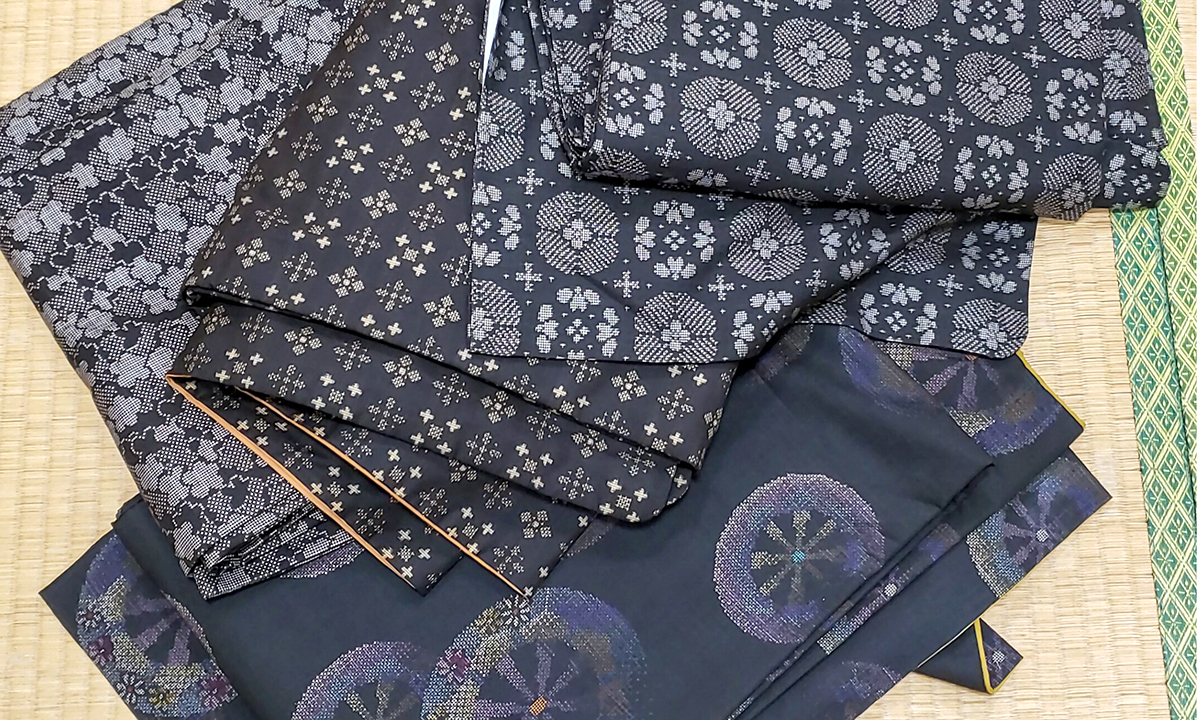
Amami islanders today continue to work towards preserving this valuable custom. Many Oshima Tsumugi producers offer dyeing workshops where visitors can hand-dye clothing of their choice in the customary methods of Amami. In this article we will introduce the workshops of Aikana Kobo studio in Tatsugo, held by the lovely Norimi Maeda.
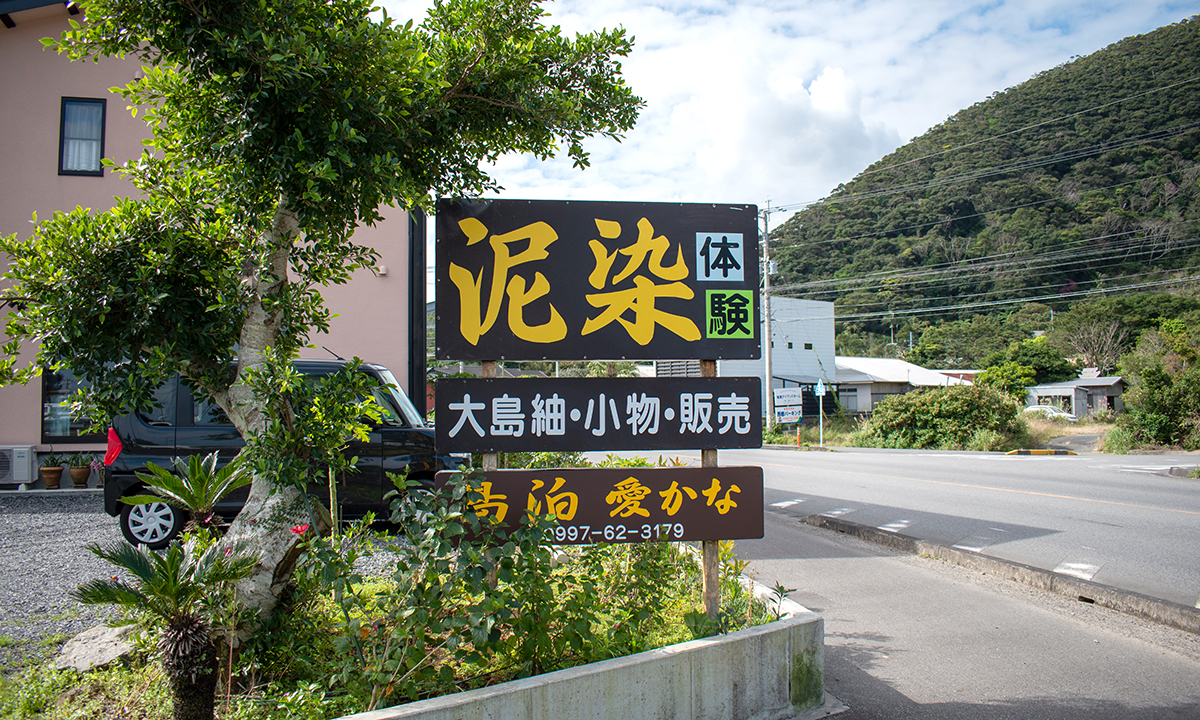
Natural Dyes
The dyes that are incorporated into the production of Oshima Tsumugi are all found in nature on the island, and consist of plant-based dyes, a reddish dye from the ‘sharinbai’ hawthorn wood, indigo, and finally mud dye. On some occasions the silk is left undyed, which makes a subtle white fabric.
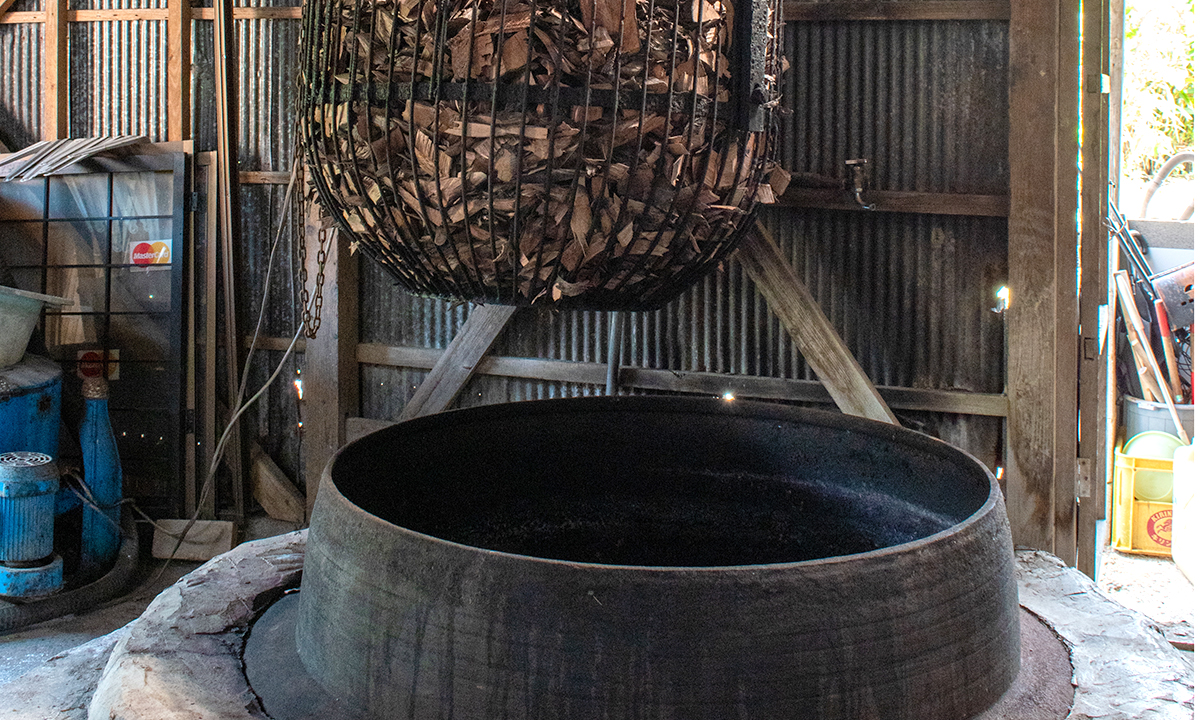
The iconic black of Oshima Tsumugi is created by alternating between dyeing the silk in sharinbai dye and then inserting it into a mud field, which causes a chemical reaction between the tannic acid in the sharinbai dye and the iron in the mud field. The repetition of this process produces an array of colors, and makes each roll of fabric unique.
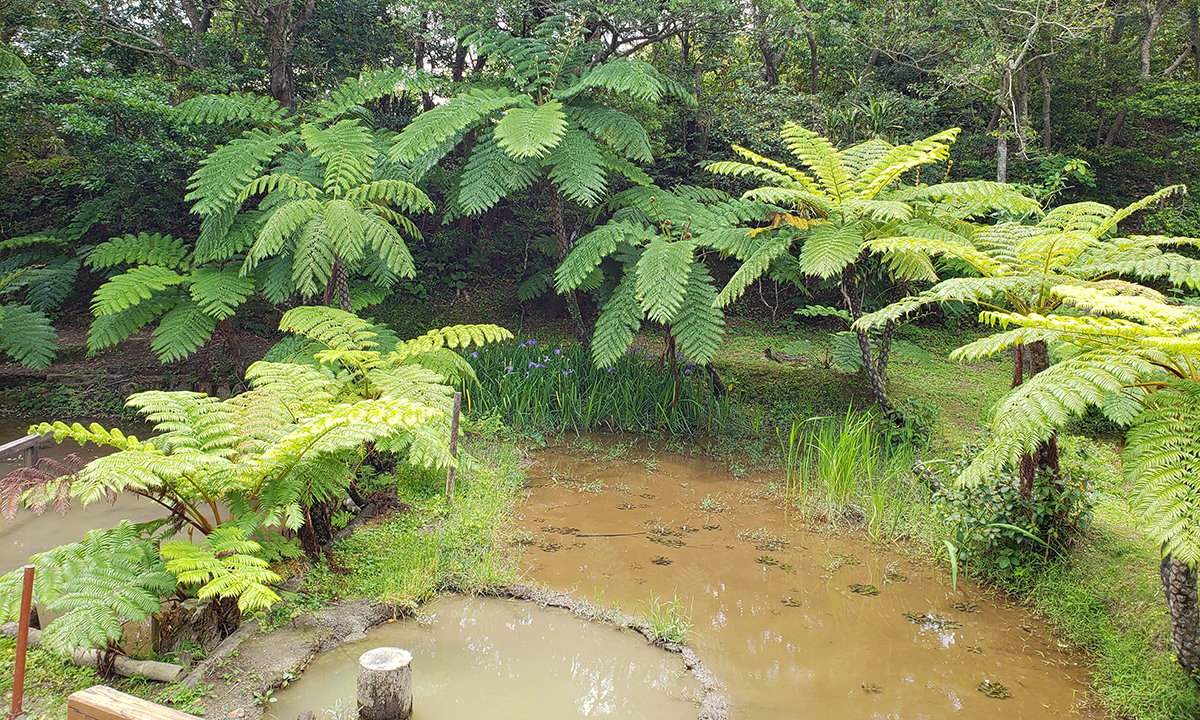
How it Works
First, we chose the type of cloth we wanted to dye; visitors have the option of bringing their own or choosing from a variety of clothing that Aikana Kobo provides for the workshop. The price of the overall workshop varies by the item chosen. I personally chose a scarf, and my coworker brought her own cloth bag!

We then tied off the areas which we intend to leave white or lighter colors, and got to dyeing the fabric in the sharinbai. The more you repeatedly insert it in the dye, the darker it becomes. I opted for a dark pink to light pink gradation. My coworker chose to dye part of the bag with mud as well, so we went to the back of the studio to the mud field.
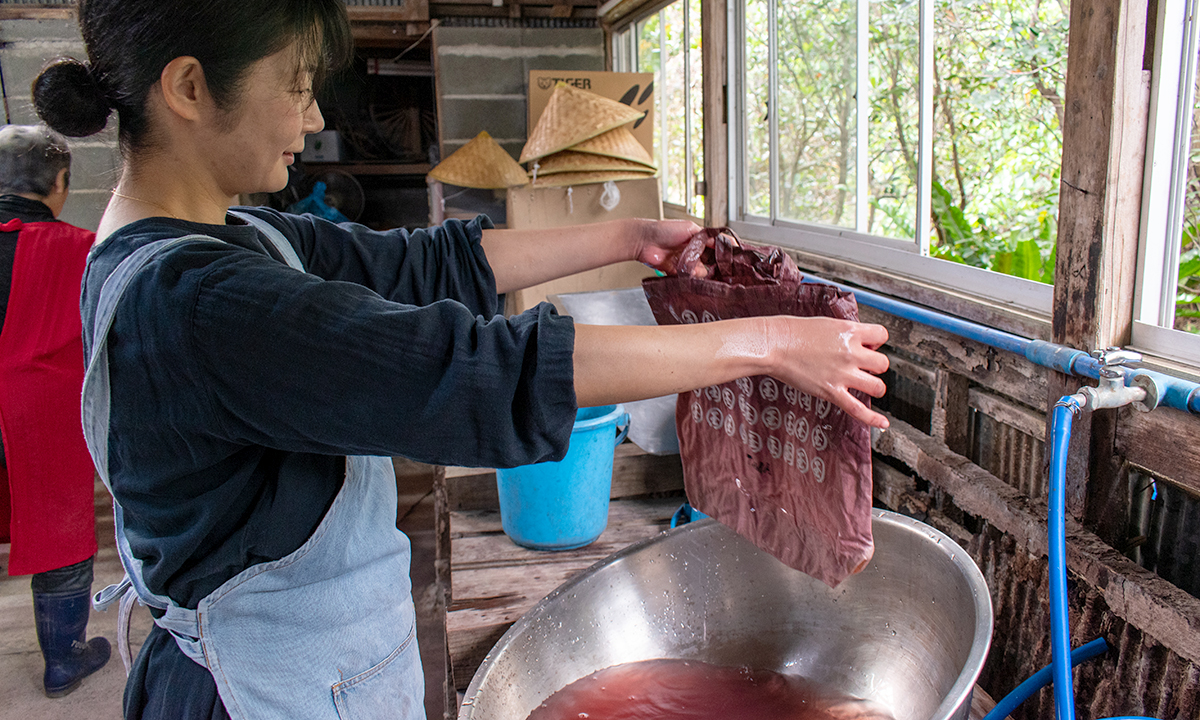
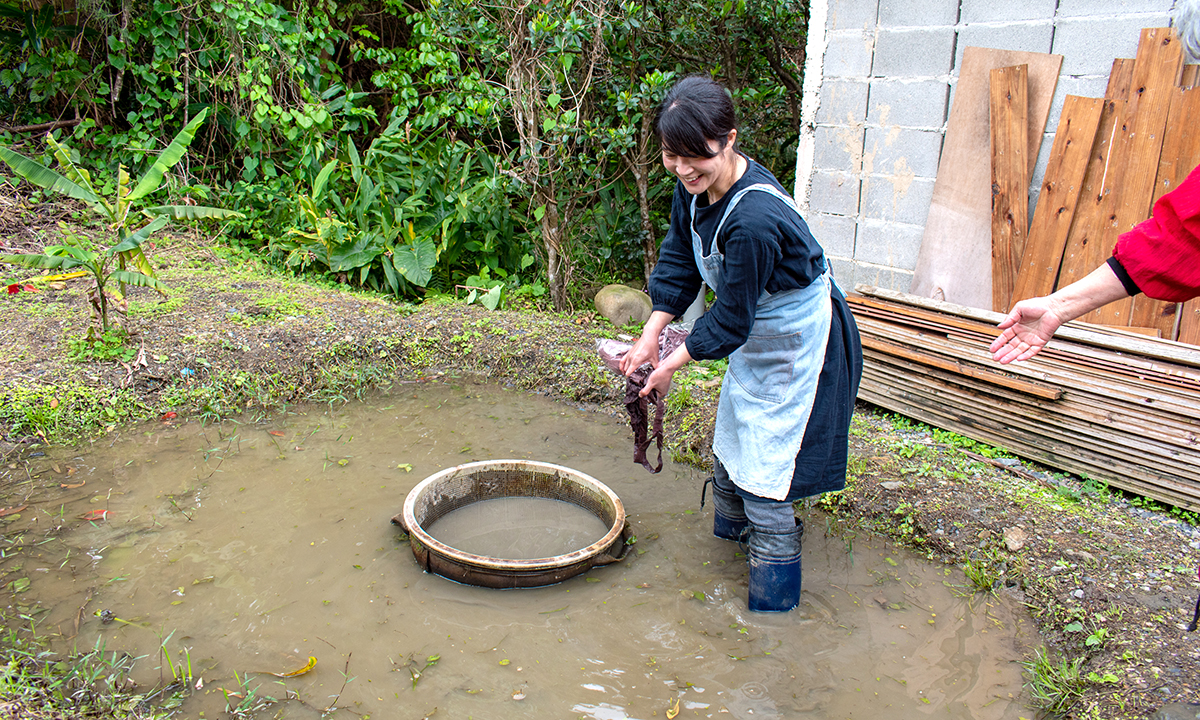
The overall workshop takes just over an hour. We took longer for our workshop because we enjoyed chatting with Mrs. Maeda so much!
Aikana Kobo
Norimi Maeda began dyeing assorted cloth items when her and her husband purchased an old dye factory in 1979 after they started their family together. They renovated the factory into a studio, and she started to try out dyeing socks, scarfs, and other items out of curiosity as she helped her husband. She later became well-known for her work after she won first prize at a Kagoshima Prefectural Contest of local products in 1996 with a mud-dyed scarf, and ever since she has been on the forefront of preserving the rich cultural tradition of using mud and other plant-based dyes on Amami.
She instructed my coworker and I step-by-step through the dyeing process, and casually went on to recount how she has been the subject of numerous television programs, overseas fashion exhibitions, radio segments, and newspaper articles throughout the years. In the short span we were there, she received an offer to feature her designs on shirts, and multiple groups of visitors came to ask if they could see the studio.
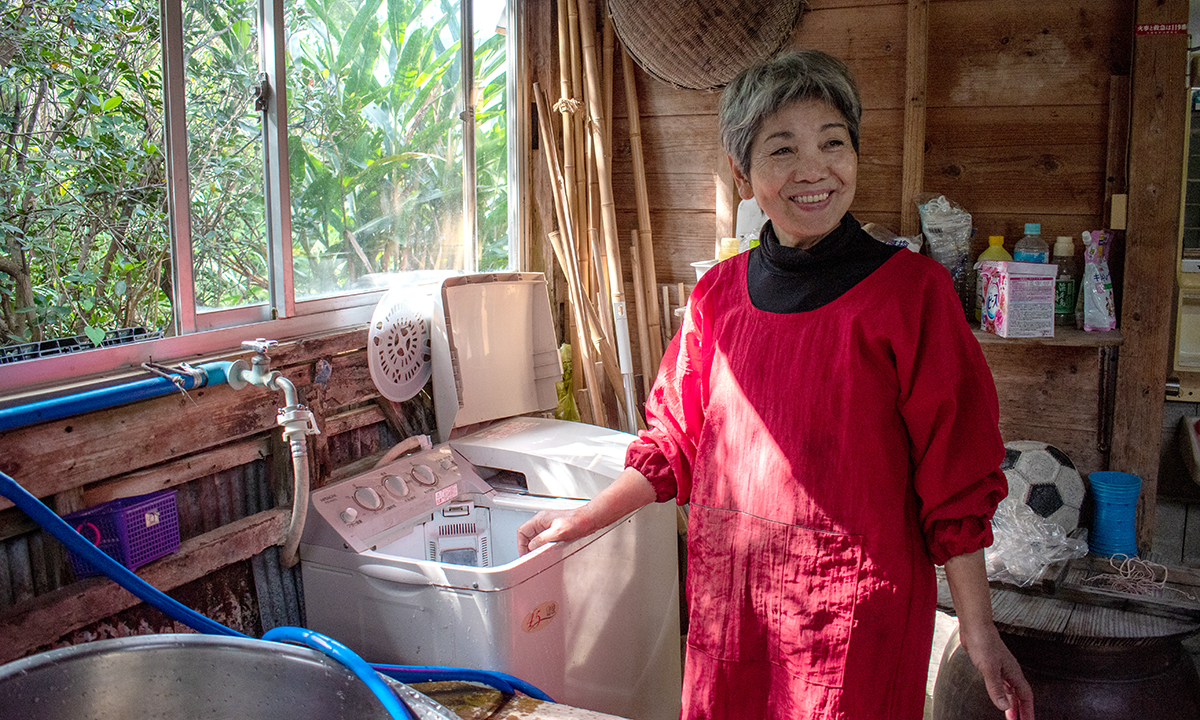
Concluding Thoughts
Clothing and other items hand-dyed in a dyeing workshop on Amami make personal, one-of-a-kind souvenirs, and visitors get to make special memories along the way. It is fun for everyone from the whole family to solo travelers—be sure to experience traditional dyeing workshops during your next trip to Amami!
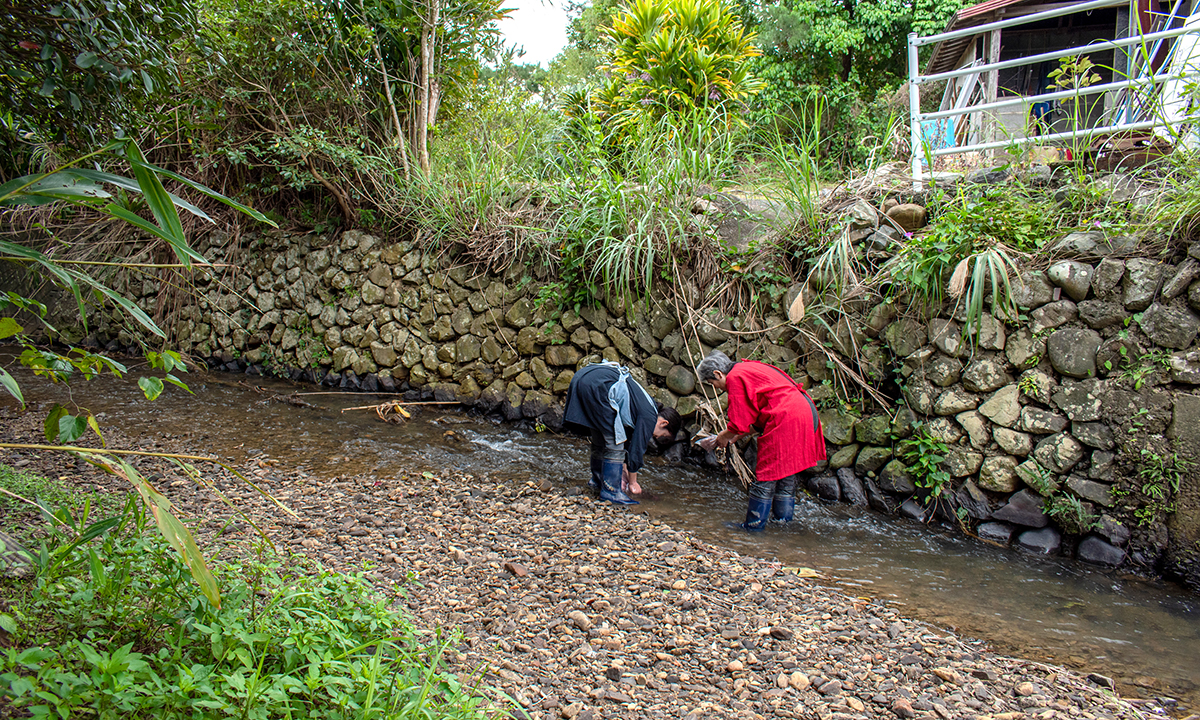
Additional Information
Mud-Dyeing Workshop
・¥3,000 per person (plus the cost of the item to dye)
・Reserve by phone at the number below
Aikana Kobo
http://www.aikanakobo.com/experience/
0997-62-3179 (090-2587-3765)
1116 Tatsugo-cho Sedome Aza Mori Ashibaru, Oshima-gun, Kagoshima-ken 894-1404


